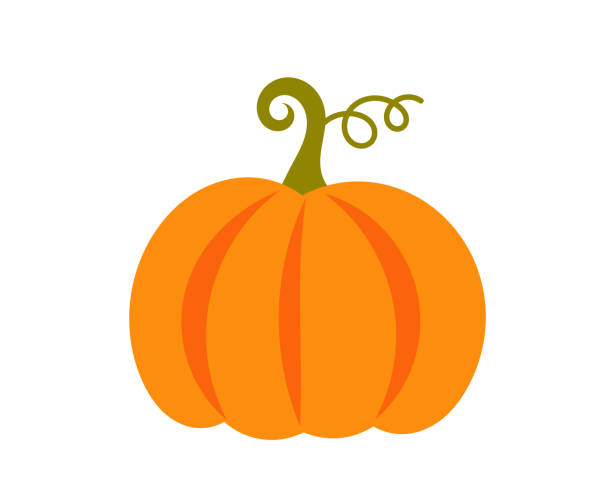Pumpkin is a sweeter vegetable than most, and although this is indeed due to higher sugar content, we should not consider that it is a food rich in sugar. Pumpkin is a great food that can come in handy for somewhat reluctant to green leafy vegetables.
It is reputed to be sweeter, caloric, and sugary than other vegetables in small quantities. For example, 100 grams of pumpkin provides:
30 Kcal: similar to the energy provided by the same amount of red pepper, mushroom, or white onion.
3.5 g of sugar: which means 1 g more than the sugar contained in 100 g of green beans or eggplant and less than half the sugar contained in the typical sachet of the bar, which is usually 8 g.Nutritional value of pumpkin
Water
Fiber
Potassium
Vitamin A
CarotenoidsIdeas for eating pumpkin
Pumpkin, having that sweet spot, can be used both in savory and sweet dishes, in main dishes, or desserts and pastries:
A classic is the pumpkin cream, which can be made only with pumpkin and olive oil or by adding sautéed or fried onion or leek. You can also make pumpkin cream with potato or mixed with many other vegetables.
Another option is to cut it into small cubes and sauté or sauté it together with other vegetables; it can be used as an accompaniment to a lump of meat, or as part of a salad or make multiple recipes with it, a risotto, a lasagna, a hummus and let's not talk anymore of pasta stuffed with pumpkin… And it can be made stuff!
In its sweet version, we can make a cream with pear, pumpkin jam, different types of pumpkin pie, the typical Canary Island pumpkin tortillas with cinnamon ...
Let's not forget that the seeds are also consumed, which we can add to yogurt, a salad, or any other dish, in addition to preparing delicious loaves of bread with them.Pumpkin oil
In Slovenia, the pumpkin seed oil is typical, and it has a mild flavor and a dark color that turns what it touches green. It can be used to dress any dish, just as we use the olive one here.
bowls with pumpkin cream
Who is it suitable for, and who is not?
It is recommended for:
Easily digestible diets: pumpkin pulp is rich in mucilage which is attributed to a protective role for the gastroduodenal mucosa and anti-ulcer properties, which is why it is considered suitable for people suffering from ailments such as gastroenteritis.
People (adults or children) with an aversion to vegetables: their color, aroma, and flavor make them quite different from all vegetables, at least from green ones, which are sometimes rejected. It is an excellent way to eat vegetables and, in addition, in a thousand ways.
Athletes: potassium is one of the minerals involved in muscle contraction and maintains our body's electrolyte balance.
In episodes of vomiting or diarrhea or other situations of increased potassium needs: in these cases, we can help replace the loss of potassium caused by these episodes with the intake of foods rich in potassium, such as pumpkin.Autumn is synonymous with cold, rain, and, for those who can, a fireplace. The season in which the nights take time is also the perfect season to enjoy seasonal fruits and vegetables that contain more vitamins and minerals than usual.
This season, which for many is sad, opens up a wide range of possibilities for gastronomy lovers to consume products that were not in their maximum splendor in summer. Of course, although we are still talking about seasonal products, nowadays it is straightforward to obtain them at any time of the year. But the land is wise, and between September and December, it provides us with a series of suitable foods for these dates.
Spending the summer, where we want to eat fresh and light meals (such as a gazpacho or a salmorejo), the body asks in autumn for foods that warm the body. But not only that, but in October we can enjoy seasonal fruits and vegetables that surprise us in the mouth. Without further ado, here we leave you with five foods that are perfect for consumption in October.
grenade
Although it may seem a priori a summer fruit, because its consumption is related to fresh salads or juices, the pomegranate is a characteristic fruit of autumn. The fruit of the pomegranate, a small deciduous fruit tree of the Lythraceae family, is characterized by having a low caloric value due to its high water content. This fruit also provides a low content of carbohydrates.
Due to its high water content, it is a fruit of low caloric value, with a low contribution in carbohydrates. And while the scarlet is a fruit recommended for hypertensive people, its consumption is contraindicated in those with kidney failure due to its potassium (the most prominent mineral in this fruit).
Regarding vitamins, another characteristic of the fruits of this fall season, the pomegranate contains vitamin C and E (it contains 10.2 milligrams of vitamin C per 100 grams). Of course, compared to other fruits (such as lemon, with 53 milligrams of vitamin C per 100 grams), this vitamin intake is much lower.
Pomegranate, a fruit with antioxidant properties.
Sweet potato or sweet potato
Sweet potato or sweet potato is a perfect garnish for fall dishes. Roasted, fried, cooked, or chips are ideal for giving a sweet touch to meals during this time of year. In addition, it is so easy to make that even the microwave can help us prepare a sweet potato.
As with potatoes, there is a great variety of sweet potatoes. The differences, although small, lie in the taste, size, texture, and color. The most common sweet potato is the orange, but more yellow, white, or even purple sweet potatoes are also more.
Regarding the nutritional profile of the sweet potato, it contains two grams of protein, 24 grams of carbohydrates, four grams of fiber, no fat, and 103 kilocalories. It also has calcium, phosphorus, magnesium, potassium, vitamin A, and vitamin C.

















Add Comment